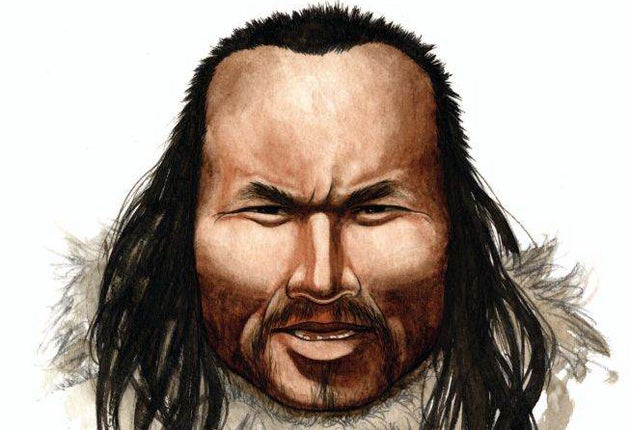Revealed: the face of Greenland (circa 2000BC)

He had brown eyes, non-white skin, "shovel-shaped" front teeth and was at high risk of going bald and suffering ear infections. Oh, and he lived 4,000 years ago and nothing remains except a clump of his thick, dark hair.
The first, almost complete genome of an ancient human being has revealed some of the traits of a man living in the high Arctic of western Greenland at the time of the pharaohs of Egypt. Scientists have deciphered about 80 per cent of the man's genome by extracting DNA from hair excavated from an archaeological site in north-western Greenland that was home to the ancient Saqqaq culture, the first known people in the New World Arctic.
He was male with an A+ blood group. He was short, an adaptation to the cold weather, and had dry earwax, which made him prone to infections. Scientists also found "Inuk" was more closely related to the modern tribes of eastern Siberia than to present-day Inuits or native North Americans. This suggests a hitherto-unknown migration from Siberia to Greenland about 5,000 years ago, said Professor Eske Willerslev of Copenhagen University, whose study is published in Nature.
"We have puzzled over where these people came from. There have been theories that they are ancestors of Inuits or were native Americans," Professor Willerslev said. The genome study shows that Inuk's ancestors were related to modern east Siberian tribes such as the Nganasan, Koryaks and Chukchis. "There was no land bridge between Siberia and Alaska at that time 5,000 years ago," he said. "These guys crossed the Bering Sea by boat or in the winter over the ice. No one knows."
Join our commenting forum
Join thought-provoking conversations, follow other Independent readers and see their replies
Comments